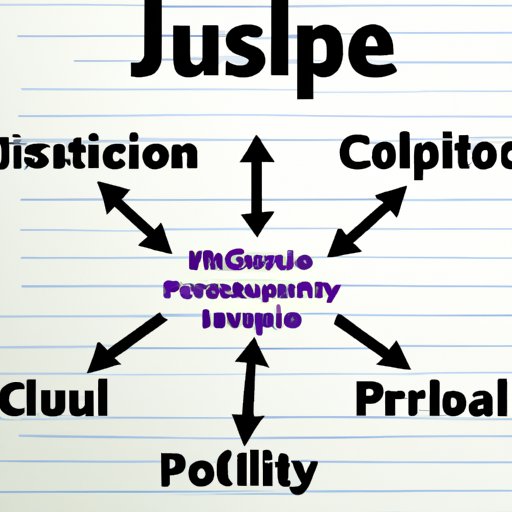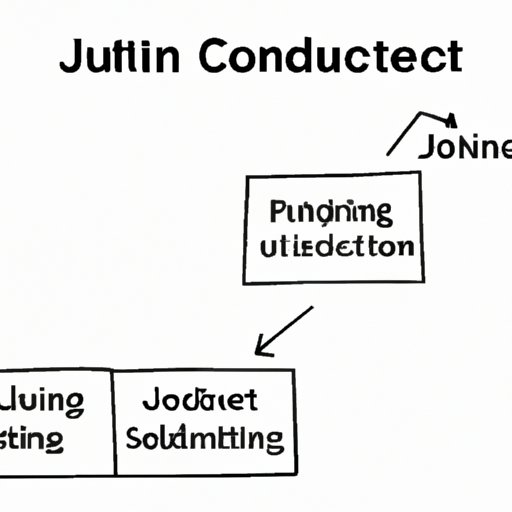Introduction
When parents decide to separate or get divorced, one of the most important decisions they must make is how to arrange for the care and upbringing of their children. Joint custody is an option that many parents consider, as it offers both parents the opportunity to remain involved in the lives of their children. But what exactly is joint custody and how does it work? Here, we will explore the definition, steps, benefits, challenges, types, and strategies associated with joint custody, as well as the role of the courts in such cases.
Definition of Joint Custody
Joint custody is a type of child custody arrangement in which two parents share legal and/or physical custody of their child or children. It is an arrangement that allows both parents to retain rights and responsibilities in making decisions about the upbringing of the child or children, including decisions related to medical care, education, religion, and other activities.
Overview of Joint Custody
Joint custody is often seen as a preferable option for divorcing or separating parents, as it allows both parents to remain involved in the lives of their children. In some cases, joint custody may even help minimize the amount of conflict between the parents, as it encourages them to cooperate and work together in the best interests of the child or children. Additionally, it may provide the child or children with greater stability and continuity, allowing them to maintain relationships with both parents.
Steps to Establishing a Joint Custody Agreement
Establishing a joint custody agreement requires both parents to negotiate and come to an agreement on various aspects of their child’s care and upbringing. This agreement should be documented in writing and submitted to the court for approval. The following are the steps involved in establishing a joint custody agreement:
Negotiating an Agreement
The first step in establishing a joint custody agreement is for the parents to negotiate and come to an agreement on various aspects of their child’s care and upbringing. This includes deciding on the type of custody arrangement that will be used (legal, physical, or both), determining who will have primary responsibility for decision-making, setting up a visitation schedule, and determining who will pay for what expenses. The agreement should also include provisions for resolving any disputes that may arise.
Achieving a Court-Approved Agreement
Once an agreement has been negotiated, it must be submitted to the court for approval. The court will review the agreement to ensure that it is in the best interests of the child or children. If the court approves the agreement, it will become legally binding and enforceable.

Benefits and Challenges of Joint Custody
Joint custody can offer many benefits, but it can also present some challenges. It is important for parents to understand both before entering into a joint custody arrangement.
Benefits
One of the main benefits of joint custody is that it allows both parents to remain involved in the lives of their children. This can be especially important if the parents live far apart. Additionally, joint custody may help reduce the amount of conflict between the parents, as it encourages them to cooperate and work together in the best interests of the child or children. Finally, joint custody may provide the child or children with greater stability and continuity, allowing them to maintain relationships with both parents.
Challenges
One of the main challenges of joint custody is the increased complexity of the arrangement. As both parents will have to work together in order to make decisions about the child or children, there is potential for disagreements and conflicts to arise. Additionally, the parents will need to coordinate their schedules in order to ensure that their child or children are able to spend quality time with both of them. Finally, joint custody can be expensive, as both parents will be responsible for paying for the costs associated with raising the child or children.

Types of Joint Custody: Legal and Physical
Joint custody can involve either legal custody or physical custody, or both. Here, we will discuss the differences between the two.
Legal Custody
Legal custody refers to the right and responsibility of both parents to make major decisions about their child’s care and upbringing, such as decisions related to medical care, education, religion, and other activities. When parents have joint legal custody, they must work together to make these decisions.
Physical Custody
Physical custody refers to the actual physical care and supervision of the child or children. When parents have joint physical custody, they must coordinate their schedules in order to ensure that their child or children are able to spend quality time with both of them. It is important to note that physical custody does not necessarily mean that the child or children will spend equal amounts of time with each parent.

Strategies for Successful Joint Custody Outcomes
In order for joint custody to be successful, both parents must be willing to cooperate and work together in the best interests of the child or children. Here, we will discuss some strategies for achieving successful joint custody outcomes.
Communication is Key
Effective communication is essential for successful joint custody arrangements. Both parents must be willing to listen to each other’s concerns and work together to resolve any issues that may arise. Additionally, they should strive to keep lines of communication open and clear in order to ensure that their child or children receive the best possible care.
Keeping the Best Interests of the Child in Mind
When negotiating and establishing a joint custody agreement, it is important for both parents to keep the best interests of the child or children in mind. This means that all decisions should be made with the goal of providing the child or children with the best possible care and upbringing.
Establishing Clear Rules
It is also important for both parents to establish clear rules and guidelines for their joint custody arrangement. This includes setting up a visitation schedule, agreeing on who will be responsible for making decisions, and establishing procedures for resolving disputes. By clearly defining expectations, both parents will be better able to cooperate and work together in the best interests of the child or children.
The Role of the Courts in Joint Custody Cases
The courts play an important role in joint custody cases. Here, we will discuss the role of the courts in such cases.
Seeking Court Approval
As mentioned earlier, any joint custody agreement must be submitted to the court for approval. The court will review the agreement to ensure that it is in the best interests of the child or children, and if approved, the agreement will become legally binding and enforceable.
Modifying Orders
The court also has the authority to modify custody orders if either parent can demonstrate that there has been a change in circumstances that warrants such a modification. The court will review the proposed changes and determine whether they are in the best interests of the child or children.
Conclusion
Joint custody can be a beneficial arrangement for families going through a divorce or separation. It allows both parents to remain involved in the lives of their children, while providing them with the stability and continuity they need. Establishing a successful joint custody arrangement requires both parents to negotiate and come to an agreement on various aspects of their child’s care and upbringing, and then submit the agreement to the court for approval. Additionally, both parents must be willing to cooperate and work together in the best interests of the child or children. Finally, the courts play an important role in joint custody cases, both in approving agreements and modifying existing orders.
Summary of Joint Custody
Joint custody is a type of child custody arrangement in which two parents share legal and/or physical custody of their child or children. It is an arrangement that allows both parents to remain involved in the lives of their children and make decisions related to their care and upbringing. Establishing a joint custody agreement requires both parents to negotiate and come to an agreement on various aspects of their child’s care and upbringing, and then submit the agreement to the court for approval. Additionally, both parents must be willing to cooperate and work together in the best interests of the child or children. The courts play an important role in joint custody cases, both in approving agreements and modifying existing orders.
Final Thoughts
Joint custody can be a beneficial arrangement for many families, but it is important for parents to understand both the benefits and challenges before entering into such an arrangement. Additionally, it is important for both parents to cooperate and work together in the best interests of the child or children in order for the arrangement to be successful. Finally, the courts play an important role in joint custody cases, both in approving agreements and modifying existing orders.
(Note: Is this article not meeting your expectations? Do you have knowledge or insights to share? Unlock new opportunities and expand your reach by joining our authors team. Click Registration to join us and share your expertise with our readers.)
